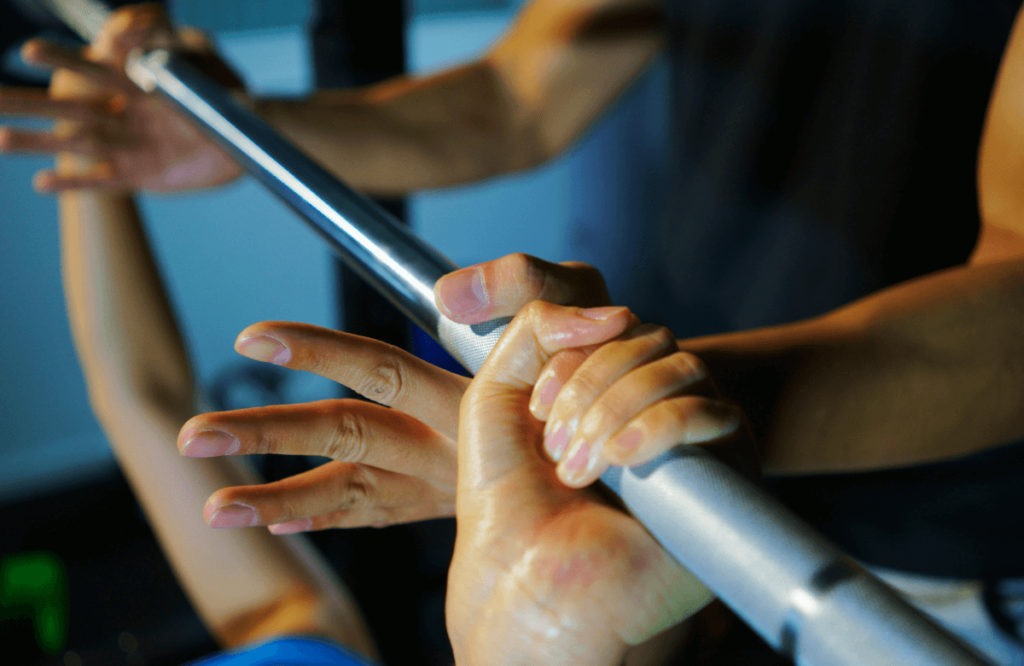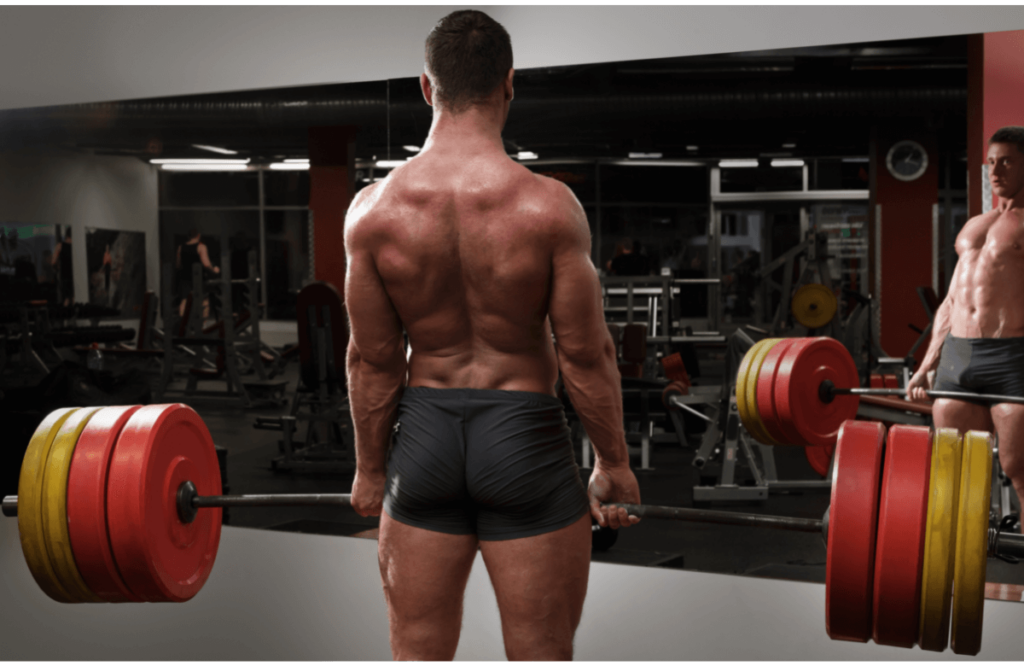Finding your perfect deadlift to squat ratio can be difficult. From your body shape, weight, limb length, and overall experience, the number changes per person. However, if you’re struggling to find your ideal ratio then look no further! In this article, we’re going over what a strength ratio is, how to identify your weakness using a strength ratio, and things that might be impacting your ability to squat or deadlift to help you meet your desired ratio.
We’re even going to talk about which is better, a squat or a deadlift, and whether doing them in the same workout is a good idea. So let’s not waste any more time, let’s get into it!
Jump to:
- The Muscles Worked:
- The Strength Ratio:
- Identifying Your Weaknesses With Ratios:
- The Top Things That Are Killing Your Deadlift to Squat Ratio:
- Should You Do Deadlifts or Squats First?
- Are Deadlifts Easier Than Squats?
- Can Deadlifts Replace Squats?
- Can You Squat and Deadlift in the Same Workout?
- Should You Squat Or Deadlift More?
- How to Get Stronger in the Squat and Deadlift?
- Which is Better: Deadlifts or Squats?
- What Is The Ideal Squat To Deadlift Ratio And When Should I Change It?
The Muscles Worked:
Muscles Worked in the Squat
The main muscles used in a squat are your primary knee and hip extensors which include the lower back, glutes, abductors, and quads. You’re also working your calves during the ankle extension.
Muscles Worked in the Deadlift
Since there’s more of a hip hinge during a deadlift it assists your posterior chain better than a squat. Though the main muscles used are the glutes and lower back, the more secondary muscles worked are the quads, hamstrings, forearm flexors (for grip), trapezius, and adductors.
The Strength Ratio:
The average lifter typically squats 90% of their deadlift. This means if you deadlift 100 lbs, you should squat at least 90 lbs. Though there are a few things that can change the strength ratio between a conventional deadlift and a squat. Like how the lower the body weight on a person, the more someone should be able to deadlift while the higher the body weight, the chances someone should be able to squat more.
Besides your body weight, your squat and deadlift ratios are also impacted by what your body looks like (this is geared towards arm, torso, and leg length) and your overall technique. Since you can’t change your limb length, focusing on things like increasing your range of motion, properly bracing your core muscles, and building your grip strength all while perfecting your squat and deadlift technique can change your strength ratio exponentially.

Identifying Your Weaknesses With Ratios:
The key to building muscle mass and strength is figuring out what your deadlift or squat ratio is telling you.
In bodybuilding, it’s comparably easy since you can see which muscles need the most assistance, but for performance guys, the optimal way to find out what lift(s) are weaker is through comparing strength ratios.
For example, if you can squat 200 lbs 5 times, you should be able to front squat 155 lbs 5 times, or 85% of your squat poundage and if one ratio is off (either weirdly lower or higher than the 80-90% ratio) then you know you need to work on that specific exercise to stay in that consistent range.
Imagine if you could deadlift 500 lbs, but only squat 200? There’s an insignificant imbalance there and by using ratios you can determine how far off you are and then after finding ways to correct it, mark them using a workout log to keep track of your progress.
The Top Things That Are Killing Your Deadlift to Squat Ratio:
Your Body Length And Height
As many of us folks wish it weren’t true, it’s been shown that people who weigh more tend to be better at squats while lifters who weigh less often do better with deadlifts. And it’s been proven that people with longer torsos are better at the sumo deadlift variation compared to people with shorter torsos.
Even with these facts, keep in mind that your weight class shouldn’t be holding you back. It’s not confining you to a box, it’s simply telling you where you might struggle based on your body type. And the noticeable change doesn’t start unless you’re a man over 200 lbs or 140 lbs for a woman.
Your Exercise Routine
A key difference is both deadlifts and squats have a billion variations like the goblet squat and stiff-legged deadlifts that target other muscle groups or challenge your body in other ways. And it’s easy to get swept up in doing as many variations as possible, however, there’s a chance you’re hindering your squat-to-deadlift ratio without even realizing it.
Say you’re doing lots of back squats with your powerlifting deadlifts. These exercises focus on the back, hamstring, and glutes and while that’s great if you’re training to improve your deadlift number, it’s not the best if you’re trying to increase your squat number. Remember that the exercise that’s the furthest away from the ideal number is where your greatest weakness lies, so doing other variations thoughtlessly might aid or make it harder to equalize your ratio.

Your Grip Strength
Deadlifts obviously require much more grip strength, while standard squats allow your shoulders and upper body to bear some of the weight of the barbell and need less grip strength. Even if you’re doing front squats or other squat variations that involve more grip, your general grip strength will still be impacting your deadlift poundage more because practically every deadlift variation relies on it.
If you’re looking to improve your grip strength, try things like pull-ups, chin-ups, resistance band pulldowns, and dead hangs if you think grip strength is the issue behind the less-than-ideal deadlift weight.
Should You Do Deadlifts or Squats First?
Since the exercises are similar, many people do squats and deadlifts in the same workout. If this is something you do the short answer is to do squats first since it’s typically easier on the body and if you’re a powerlifter, it doesn’t hurt anything to train as you compete every once in a while.
However, if you’re thinking you’ll do squats as a type of warm-up for your deadlifts, you’re better off doing exercises like planks and side planks instead. This is because, as a sort of protective mechanism, your range of motion in your joints and the amount of force you can produce are determined by your nervous system. When your nervous system feels safe to go through a certain exercise and produce force, it will let you do it. If it doesn’t feel safe, it’ll keep your muscles from extending further.
In return, when one joint won’t move as it should, it’s compensated for by movement in another joint that shouldn’t necessarily be moving, which can result in unnecessary injury. Fitness trainer, Dean Somerset, recommends you plank before deadlifting or squatting to activate those muscles to inform your body that it’s safe to do those exercises with the best range of motion.
Are Deadlifts Easier Than Squats?
People can generally lift 24% more weight in the deadlift compared to the squat. So, technically, yes. Of course, that number varies between individuals depending on body structure, strengths and weaknesses, and prior training, but since people find the squat to be more challenging it is considered the harder option of the two.
The loaded squat doesn’t tend to resemble any type of movement we do in our everyday life while the deadlift has lower demands on mobility and the technique of picking up something from the ground resembles something we do in our daily lives.

Can Deadlifts Replace Squats?
If we’re talking leg muscle growth: absolutely not. Squats build your quadriceps far better than deadlifts do. The squat is typically seen as a leg and hip exercise while the deadlift is a hip and back exercise. This means they cannot directly replace each other. You can do more of one or the other, but picking deadlifts as a “replacement” for a squat isn’t an option.
Can You Squat and Deadlift in the Same Workout?
Since powerlifters compete in the squat, bench press, and deadlift in the same competition, you can certainly train that way. Nonetheless, since the squat and the deadlift overlap and use very similar muscles the performance of the following exercises is often impaired so you’ll likely get a lower rep number or have to use less weight in order to maintain competent technique.
Should You Squat Or Deadlift More?
As we addressed in the muscles worked section, squats build your quads, glutes, adductors, and lower back while deadlifts build muscle in your upper and lower back and glutes. So the answer to this question depends on your goals. If you want to have a more defined back of your leg you’ll want to do more deadlifts and if you want to focus on strengthening your quads then you’ll want to add more squats.
How to Get Stronger in the Squat and Deadlift?
Do what you would with any exercise and be consistent.
Consistency and like Troy explains practicing proper technique and keeping a workout log. The workout log can be done via an app on your phone or in a notebook, the goal of it is to track your weight and reps and every week increase it, whether that be a single rep or adding 10 lbs, it doesn’t matter. Each time you increase, mark it with the date and watch as your lifts get better and better.
Which is Better: Deadlifts or Squats?
This really depends on your goals. While they both have amazing benefits like building leg strength, decreasing body fat, and helping you be a better all-around athlete, there are advantages over deadlifts when compared to squats. Deadlifts are considered more natural and come with mechanical advantages meaning they’re typically easier to get the hang of.
However, it is a less popular exercise and far less used in training, which means there is a lack of research on how beneficial it is. With that said, the deadlift is fantastic for building back and glute muscles whereas the squat targets your quads so neither is truly better than the other. Honestly, together they make a great, well-rounded, pair to build your leg strength.
What Is The Ideal Squat To Deadlift Ratio And When Should I Change It?
The typical ratio is about 80 – 90%, however, that is very broad and doesn’t account for differences in body types, height, and limb and torso length that help or hinder an individual deadlift or squat.
If you find your squat ratio is over 100% of your deadlift ratio, start increasing the weight on the barbell when you deadlift and when your deadlift is higher, do the opposite.
You’ll always be going back and forth like that, but that’s how you see improvement.














